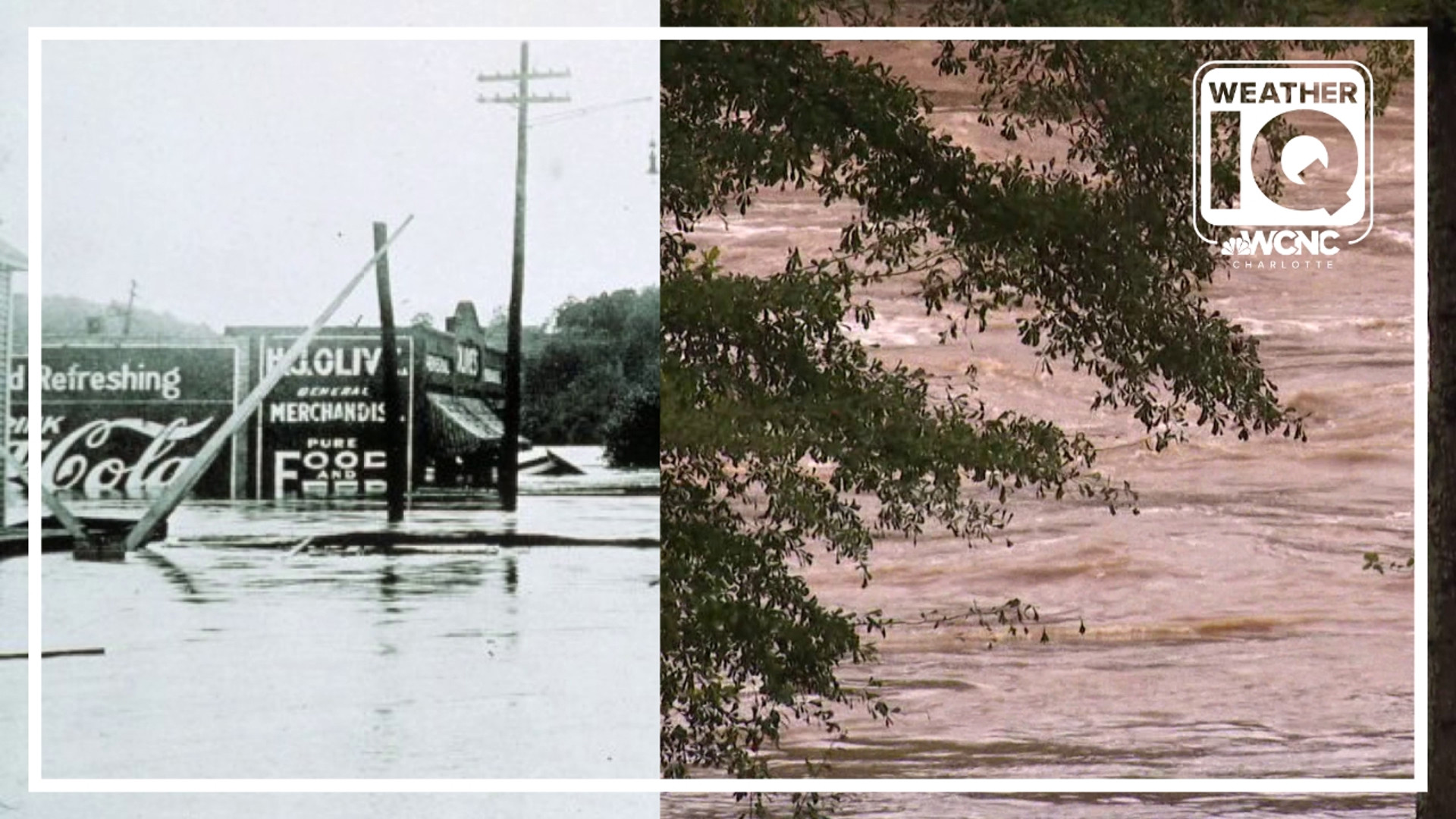ASHEVILLE, N.C. — In July 1916, the people of western North Carolina had no idea two tropical weather systems would lead to the greatest flooding in state history. The storms hit within two weeks of each other. Preliminary records from Helene indicate this storm could exceed the long-standing records.
Before the Great Flood
Hurricanes did not receive names before 1950. Instead, they were just numbered.
In 1916, the season's second hurricane made landfall as a category 3 in Mobile, Alabama on July 5. As this storm weakened into a remnant low-pressure system, it stalled over the southern Appalachian Mountains. The weather system brought several inches of rain between July 8 and July 10. This event saturated the soils and filled streams, creeks and rivers. These higher water levels elevated the flood threat.
The Great Flood of 1916
What was named 'four' made landfall in Charleston, South Carolina on July 14, 1916. The storm’s northwesterly track and counterclockwise wind field helped air rise up the mountain slopes. This produced more than a foot of rain. Alta-pass recorded 22.22 inches of rian in just 24 hours. This was the state record until Hurricane Florence broke the record 102 years later.
In 1916, rain fell on already wet ground after the other tropical system had moved through a few weeks earlier. This allowed the Swannanoa, French Broad, and Catawba rivers to rise to record levels. Flooding wiped out bridges, homes, and farmland along the rivers. The flooding resulted in $22 million in damage. Half of that estimate came solely from the destruction of crops and agriculture.
In today's dollars, the disaster would translate to $481 million.
With an estimated 80 people killed during the floods, the Great Flood of 1916 was North Carolina’s deadliest tropical system in modern history.
The 2024 comparison
The Great Flood of 1916 and 2024's Helene have similarities: They both had several inches of rainfall before the main tropical system arrived. This caused rivers in the western Carolinas to reach a critical flood stage before most of the rain arrived. That is why in both events, the French Broad River and Swannanoa River broke flood records.
The complete impacts of Helene are still not officially known. As of Wednesday, Helene stands as the second deadliest typical storm event in North Carolina history. With the death toll continuing to rise, it is possible Helene could overtake the Great Flood of 1916 in the record books.
Contact Chris Mulcahy at cmulcahy@wcnc.com and follow him on Facebook, X, Instagram and TikTok.

